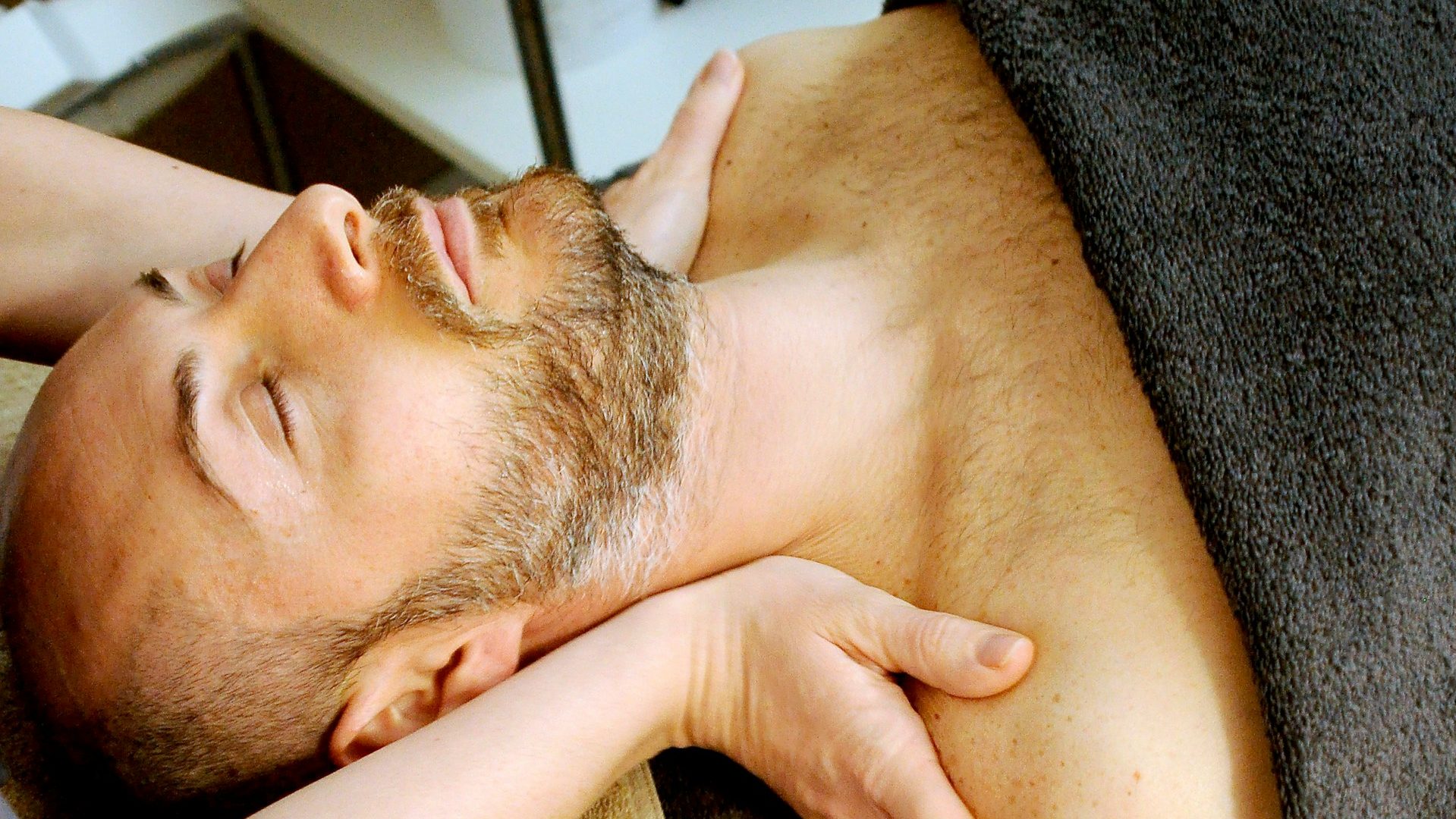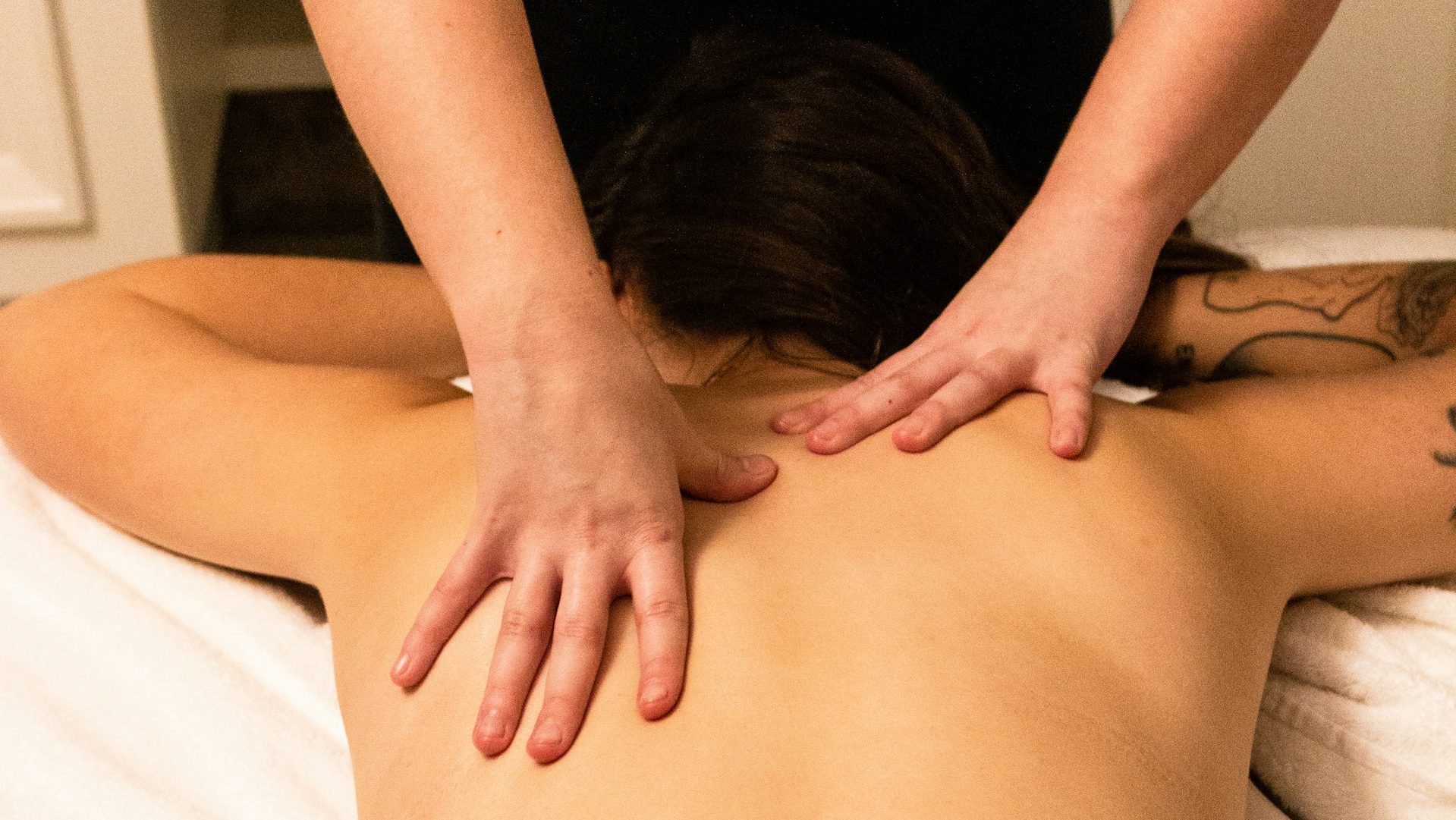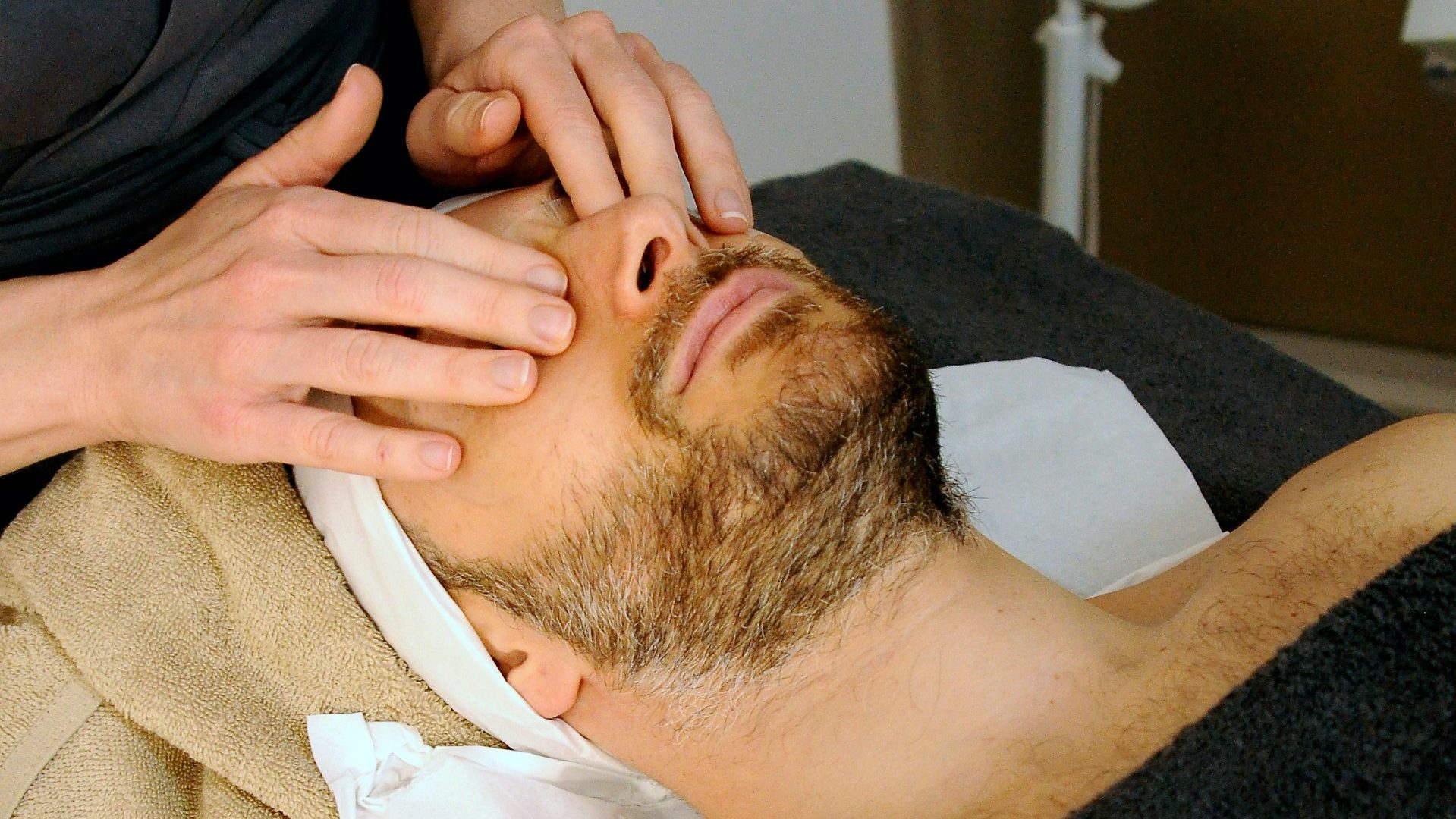Massage therapy is a trusted approach to alleviate muscle strain and soothe tender spots. By skillfully applying pressure, you can relieve muscle tension and improve overall comfort. It’s important to focus on tight or painful areas and massage them with gentle, circular motions. Remember to be mindful of the pressure applied; too much can worsen soreness, while too little may not offer sufficient relief.
When you encounter a particularly tender spot, spend a little extra time massaging the area carefully. Kneading and stroking movements help to break up knots and ease discomfort. For optimal results, maintain a consistent rhythm and gradually increase the pressure to help the muscles relax and recover more effectively.
Understanding Muscle Soreness and Recovery
Sore muscles can be a sign that your body is repairing and strengthening itself after strenuous exercise. The discomfort typically peaks a day or two post-workout and gradually dissipates. This process is a natural response to the physical demand placed on the muscles, leading to adaptations that increase strength and performance over time.
The Role of Microscopic Muscle Damage in Soreness
Following strenuous exercise, microscopic damage to muscle fibers is a key contributor to the soreness experienced. This microscopic tearing is part of the growth process, signaling your body to repair and reinforce muscle tissue, resulting in strength gains. This repair process can cause the sensation of soreness, commonly referred to as delayed onset muscle soreness (DOMS).
The Effect of Muscle Tightness on Recovery
Muscle tightness can impede recovery by restricting circulation and range of motion. Massage plays a crucial role in easing this tightness by increasing blood flow to the affected area. Enhanced circulation brings more oxygen and nutrients to the muscles, which supports faster healing and reduces the duration of soreness.
Restoring Muscle Strength and Endurance
After a massage, allowing your muscles at least 30 seconds to relax and absorb the benefits is essential. This brief pause aids in flushing out toxins and replenishing the muscles with fresh blood, which can help restore strength and endurance more rapidly. Continual hydration post-massage also supports the recovery process.
Massage Techniques for Sore Muscles
When addressing muscle pain, various massage techniques can be employed to provide relief. Each method targets soreness in different ways, from long, gliding strokes to kneading and percussion. It’s crucial to identify the techniques that best suit your needs and to apply them consistently for the most effective results.
Professional Versus Self-Massage Approaches
While professional massage therapy offers tailored treatment for muscle pain, self-massage approaches like massage guns have become increasingly popular. These tools allow you to target sore areas with precision and control the intensity of the massage, providing convenient and effective relief at home.
The Benefits of Professional Massage Therapy
Professional massage therapies, such as sports massage and relaxation massage, cater to different needs. Sports massage focuses on relieving muscle tension and improving athletic performance, while relaxation massage aims to de-stress and unwind the body. Both contribute to faster recovery and can prevent future muscle strain.
Exploring Self-Massage Options
For those looking to manage muscle discomfort independently, massage guns are a powerful option. They deliver rapid, concentrated pulses to the muscle tissue, which can help alleviate pain and tightness. These devices are particularly useful for reaching deep muscle layers that are difficult to access with traditional massage techniques.

Essential Massage Techniques to Alleviate Soreness
Alleviating muscle tightness and soreness, especially conditions like delayed-onset muscle soreness (DOMS), can be effectively addressed with a variety of massage techniques. Deep tissue massage is excellent for releasing tight muscles, while gentle strokes and kneading can promote relaxation and blood flow. It’s essential to listen to your body and adjust the pressure to target the soreness without causing additional discomfort.
Manual Techniques for Targeted Relief
Using hands-on techniques such as compressions, strokes, and pressure points can provide targeted relief to areas of muscle pain. Manual massage can break up knots and ease tension by focusing on specific sore spots, allowing for quicker recovery and increased comfort.
Using Foam Rollers and Massage Balls
Foam rollers and massage balls offer a convenient way to mitigate muscle pain through self-myofascial release. They apply sustained pressure to trigger points and tight areas, simulating the effects of a deep tissue massage and aiding in the breakdown of knots and tension.
The Science Behind Massage and Muscle Recovery
Research indicates that massage can significantly impact muscle recovery by reducing inflammation, promoting mitochondrial biogenesis, and decreasing cortisol levels. These biological responses to massage contribute to a reduction in muscle pain and an improvement in recovery times.
Harnessing the Power of Vibration Massage
Vibration massage is considered highly effective for muscle recovery. Short sessions of around 10 minutes can yield benefits, while longer sessions of 30 minutes may provide even more profound relief. Athletes and sports enthusiasts often use vibration therapy to reduce soreness and improve performance.
The Efficacy of Percussion Massage Tools
Percussion massage tools have been shown to help relieve muscle stiffness and enhance range of motion. By delivering rapid bursts of pressure into the muscle tissue, these tools can significantly reduce soreness and accelerate recovery.
Vibration versus Traditional Massage Techniques
Exploring the differences between vibration and manual massage is key when targeting sore muscles. Vibration therapy utilizes oscillating movements to stimulate blood flow, potentially offering quicker relief. Manual massage, on the other hand, involves various hand techniques that allow for a more personalized touch, focusing on specific muscle groups and knots for tailored relief. Both methods can be effective, but personal preference and specific muscle needs should guide your choice.
Navigating Your Massage Options
When alleviating sore muscles, choosing between professional help or a DIY approach can be pivotal. Professional therapies often provide a deeper level of muscle manipulation, but they come at a higher cost and require scheduling. Self-massage techniques can be performed at your convenience and are cost-effective, though they might be less thorough. Assess your needs, budget, and preferences to make the best decision for your muscle recovery journey.
When to Choose Professional Massage Therapy
Opt for professional massage therapy when dealing with persistent soreness or requiring specialized techniques like sports massage for athletic recovery or relaxation massage to mitigate stress-induced tension. Professionals are trained to identify and effectively treat various muscle issues, making their expertise invaluable for complex cases or enhancing overall physical wellness and performance.
Types of Massages for Muscle Soreness
Different types of massages can target muscle soreness effectively. Deep tissue massage focuses on deeper layers of muscle to relieve severe tension. Swedish massage employs longer strokes to promote relaxation and blood flow. Trigger point therapy concentrates on specific areas of tightness, and myofascial release aims at the connective tissue surrounding muscles. Your choice should align with your soreness level and recovery goals.
Optimal Timing for Post-Workout Massage
The best time for a post-workout massage to address sore muscles is 24 to 48 hours after your exercise session. This timing helps reduce inflammation, ease muscle tightness, and enhance recovery by improving circulation. An immediate massage may also help, but giving your muscles a brief settling period can maximize the benefits.
The DIY Approach: Self-Massage Techniques
Self-massage techniques offer a convenient way to alleviate muscle pain at home. Techniques like kneading, stroking, and applying pressure to sore areas can be done with your hands or tools like foam rollers. This approach empowers you to address discomfort immediately and maintain consistent muscle care, ultimately contributing to quicker recovery and better muscle functionality.
Step-By-Step Guide to Self-Massaging Sore Muscles
To self-massage sore muscles:
- Start by gently warming up the area with light strokes.
- Gradually increase pressure, focusing on tender spots without causing additional pain.
- Use a combination of kneading, circular motions, and long strokes to work through the muscle.
- Finish with light, soothing strokes to help the muscles relax.
- Repeat the process on all sore muscles for comprehensive relief.
Best Practices for Using Massage Tools at Home
When using massage tools at home, start with a warm-up to prepare the muscles. Choose the appropriate tool for the targeted muscle group and apply steady, moderate pressure. Move slowly and avoid overworking any area to prevent bruising. After use, hydrate and perform light stretches to enhance the benefits of the massage and promote further muscle recovery.

Evaluating Massage Effectiveness for Sore Muscles
Evaluating the effectiveness of massage for sore muscles involves personal feedback and scientific evidence. Individuals can gauge immediate relief and long-term improvement in muscle function and discomfort. Scientific studies have shown that massage can reduce inflammation, alleviate pain, and improve mobility. However, the subjective nature of pain and various massage techniques may yield different results for different people.
What Research Tells Us About Different Massage Modalities
Research indicates that various massage modalities, ranging from Swedish to deep tissue, have distinct benefits for muscle recovery. Some techniques are better suited for relaxation and stress reduction, while others are more effective for targeting deep-seated muscle soreness. Understanding each modality’s unique mechanisms helps select the most beneficial technique for individual recovery needs.
Insights from Clinical Trials on Massage Efficacy
Clinical trials have provided insights into massage efficacy, suggesting that consistent massage therapy can significantly reduce muscle soreness and enhance recovery. Trials often monitor participants’ pain levels, recovery time, and muscle performance to determine effectiveness, revealing that massage can be a powerful tool in preventative care and treating existing muscle soreness.
Comparing the Results of Various Massage Techniques
Comparing the results of various massage techniques reveals that no single method suits all. While some individuals benefit more from the intense pressure of a deep tissue massage, others may find relief with the gentler approach of a Swedish massage. Personal preference, the cause of soreness, and desired outcomes should guide the choice of technique.
Understanding the Limitations of Current Studies
Current studies on massage therapy have limitations, including small sample sizes, varied methodologies, and subjective reporting of soreness. These factors can lead to inconsistent results and make establishing standardized guidelines for massage therapy challenging. Recognizing these limitations is essential for accurately interpreting research findings and applying them to muscle recovery practices.
The Need for Further Research on Massage and Muscle Recovery
There is a clear need for further research on massage and muscle recovery to validate and refine current practices. Larger-scale studies with standardized protocols can provide more reliable data on the optimal techniques, frequencies, and durations of massage for various types of sore muscles. This information would greatly enhance the effectiveness of massage as a recovery tool.
Product Recommendations and Reviews
In the search for relief from sore muscles, the right tools can make all the difference. Recommendations and reviews help identify products that offer the best performance and value. Look for highly rated foam rollers, massage guns, and manual tools proven to effectively address muscle soreness and tightness, as verified by user experiences and expert feedback.
Top Picks for Self-Massage Tools
Whether dealing with delayed-onset muscle soreness or just looking to unwind, the right self-massage tools can make all the difference. High-quality vibrating massagers cater to deep tissue needs, while durable manual options focus on muscle tightness. Trusted brands offer a range of products, from professional-grade equipment to affordable at-home gadgets. For the best results, consider incorporating tools into a regular recovery routine, balancing massage with stretching and other modalities.
High-Quality Vibrating Massagers
Vibrating massagers are a game-changer for those seeking deep tissue massage at home. These devices, often equipped with multiple speed settings and attachments, allow you to target specific areas of tight muscles, promoting circulation and aiding in recovery. Some high-end models even feature heat and cold therapy options, adding another relief layer for sore muscles.
Durable and Effective Manual Massage Tools
Manual massage tools, such as handheld rollers and pressure point balls, offer a more controlled approach to alleviate muscle tightness. These tools are durable and effective for pinpointing areas that need extra attention. They’re ideal for travelers and those who prefer a more hands-on technique in their massage therapy routine.
Professional-Grade Massage Equipment
Professional-grade massage equipment is a worthy investment for those who take recovery seriously. Brands such as Earthlite and Oakworks are renowned for their high-quality massage tables and chairs, designed for maximum comfort and longevity. These pieces are staples in many massage therapy practices and can bring a touch of professional care into your home.
Affordable and Accessible Self-Massage Products
There’s a variety of affordable and accessible self-massage products on the market, from foam rollers to trigger point wands. These tools are designed for easy use and can effectively reduce muscle tightness without breaking the bank. Many can be found in local stores or online, making them a convenient option for maintaining muscle health.

Practical Tips for Preventing and Managing Muscle Soreness
To prevent and manage muscle soreness, a proactive approach is key. Always start with a dynamic warm-up to prepare your muscles and follow with a cool-down period after your workout. Regularly include stretching to maintain flexibility and consider scheduling deep tissue massages to address persistent muscle tightness. Remember, recovery is just as important as the workout itself, so give your muscles the care they need to perform at their best.
Stretching and Warm-Up Strategies
A solid warm-up routine should include dynamic stretches to prime your muscles for exercise. Spending 5 minutes focusing on movements that mimic your workout can help prevent muscle tension and prepare your body for physical activity. Incorporate stretches that target major muscle groups to ensure a thorough warm-up and reduce the risk of injury.
Post-Workout Cool Down and Recovery Techniques
After exerting your muscles, a cool-down period is crucial to alleviate tension and pain. Spend at least 5 minutes performing static stretches and gentle movements to help your muscles recover. This practice can also promote flexibility and aid in the dispersion of lactic acid, contributing to less soreness in the following days.
Conclusion
Massage therapy, whether professional or self-guided, offers significant relief for sore muscles. Using simple tools like a tennis ball to release tension allows control over the pressure applied. Research from journals like Phys Ther and Scand J Med Sci Sports confirms massage’s effectiveness in reducing delayed onset muscle soreness and aiding recovery after exercise-induced muscle damage. Regular massages, about 2 to 3 times a week, can prevent soreness and improve muscle strength, as studies in J Appl Physiol and J Sport Sci have shown. Whether targeting specific areas like shin splints or general muscle recovery, professional or self-massage plays a crucial role in relieving tension and enhancing overall well-being.
